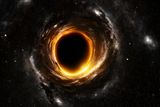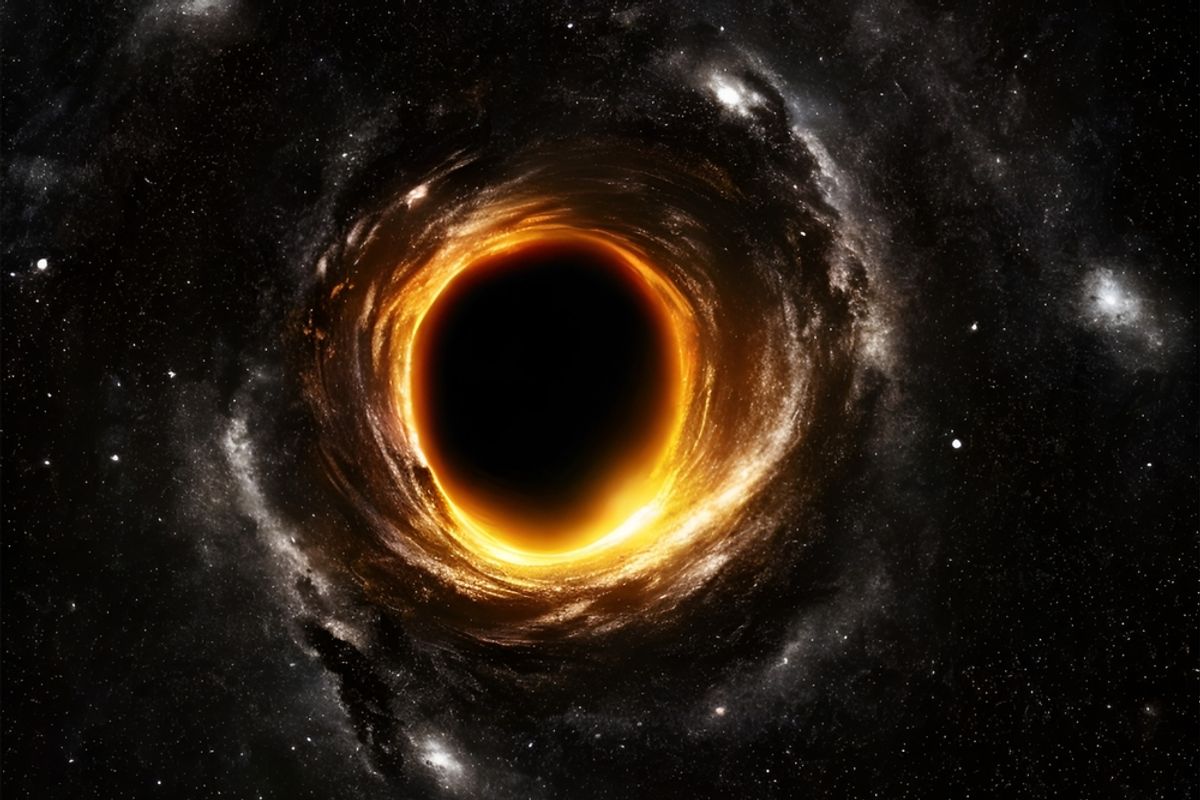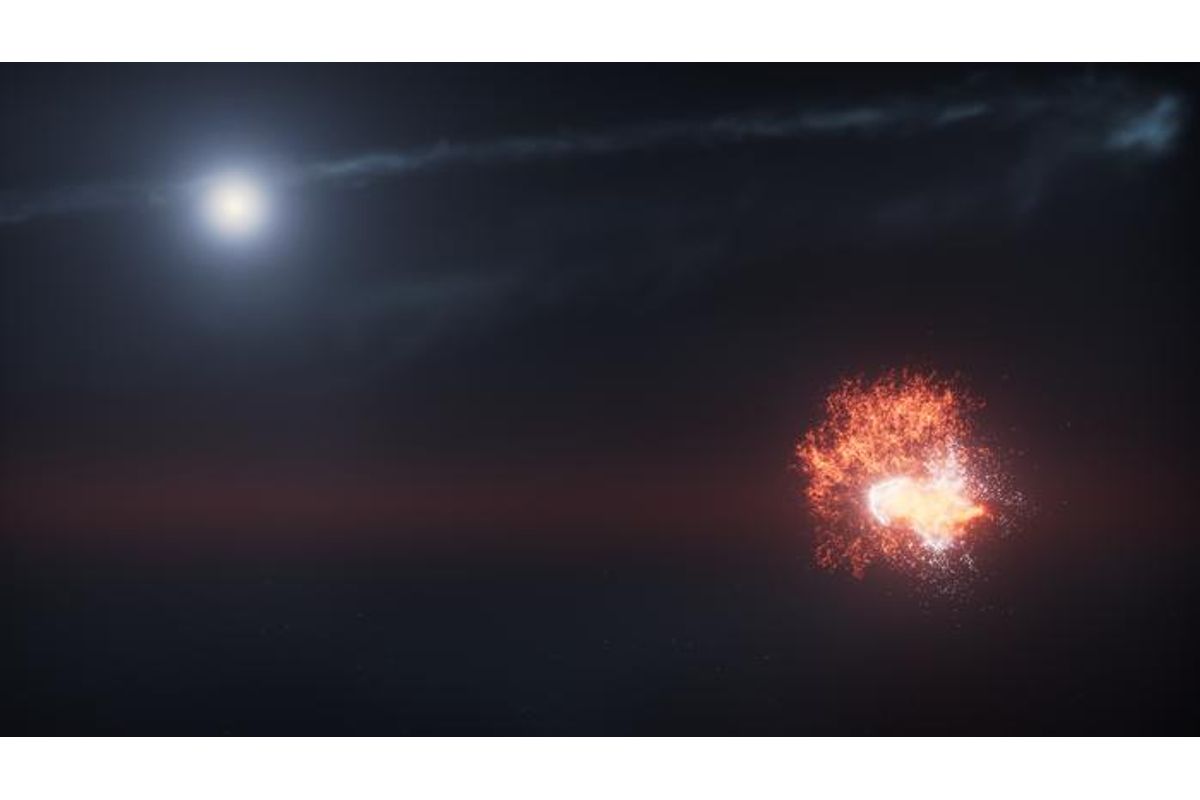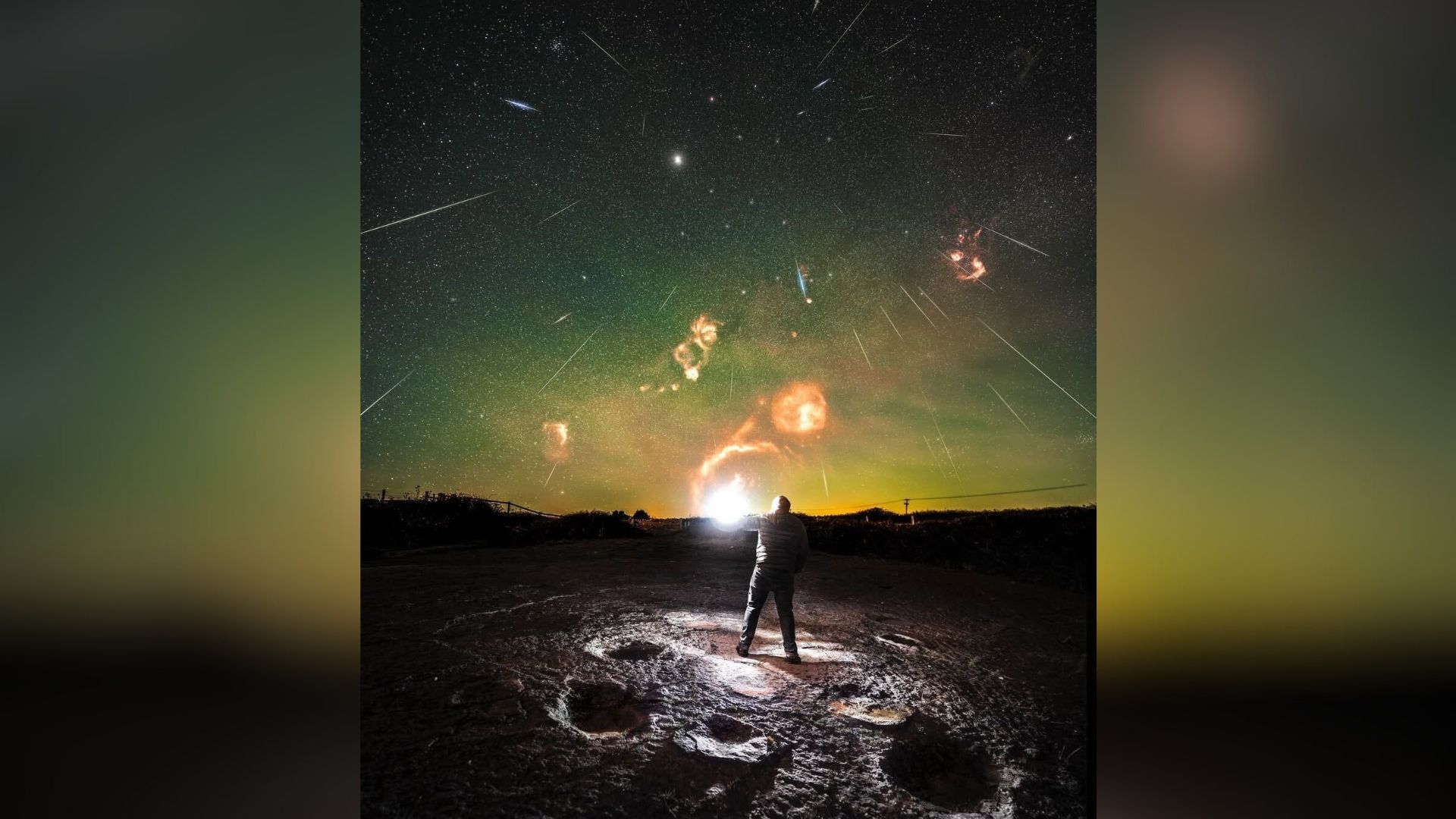
Key takeaways about the closest black hole to Earth
- The closest black hole is Gaia BH1 and is about 1,600 light years from our planet, Earth.
- Although Gaia BH1 is the closest black hole to Earth, the black hole is dormant.
- Gaia BH1 is a stellar black hole and although it is large, it is nothing compared to the size of the supermassive black hole TON 618, which has a mass equivalent to 60 billion suns.
Black holes are incredibly powerful astral forces, sucking in and absorbing everything light years away. They can absorb planets, stars, and even each other, uniting to form even larger black holes. Supermassive black holes are typically found at the center of all large galaxies, including our Milky Way.
But does this mean we have something to fear? What is the closest black hole to Earth? And does the supermassive black hole at the center of the Milky Way represent any danger to us?
The short answer is no: the closest black hole to us, Gaia BH1, is hundreds of light years away and is dormant. And TON 618, the largest black hole discovered so far, is an order of magnitude farther from Earth.
“We should be very happy to have discovered them and to be able to consider them as friends,” says Sara Rastello, an astrophysicist at the University of Barcelona who has studied Gaia BH1.
Read more: Two black hole mergers emitted gravitational waves, confirming Einstein’s theory of relativity
The closest black hole: Gaia BH1
Astronomers published their discovery of Gaia BH1 in 2023, after discovering it with the European Space Agency’s Gaia satellite, which operated from 2014 to 2025. The satellite measured how stars moved, mainly in our galaxy.
Among the many discoveries was a black hole that was relatively close to our galaxy, only about 480 parsecs from Earth. A parsec is a unit that represents the average distance between the sun and the Earth. This means that Gaia BH1 is about 1,560 light years away.
While this makes Gaia BH1 the closest black hole discovered so far, it’s not really a cause for concern for several reasons. For one thing, even the fastest spacecraft we currently have would take about 40 billion years to get there, Rastello says: “much longer than the age of the universe.”
What is an inactive black hole?
All black holes are difficult to observe because they do not emit light. Astronomers often observe black holes based on the brightness of the material around them, called an accretion disk. This disk is basically the material that is attracted towards the black hole, but has not yet passed the event horizon, basically the point of no return.
The problem is that Gaia BH1 does not have an accretion disk: it does not actively attract material. For this reason, Gaia BH1 is known as an inactive black hole. The only reason scientists discovered its presence was because of the orbit of a star the size of our own sun that was attached to it.
This star had a warbling orbit, leading scientists to believe that it was moving around something, but something was dark. Since nothing could be seen, they identified the force as a black hole.
“It’s like we detect the invisible,” says Rastello.
The companion star is still quite far from the black hole: it orbits the black hole every 185 days at about 1.3 times the average distance between the Earth and the Sun.
“At the moment, the system is completely stable,” says Rastello. “The Sun-like star and the black hole are far enough apart that no mass transfer occurs.”
This binary is relatively isolated in the Milky Way disk, so it is unlikely that anything else will interfere with this system. But in a few billion years, the star could expand into a red giant, at which point it could begin to lose material to Gaia BH1, which would then become active.
Latent black holes are a relatively new discovery, Rastello says. But now that astronomers know how to look, “we hope to find a lot of them.”
Using the Gaia satellite, they have already found two more, Gaia BH2 and Gaia BH3, at distances of 3,800 and 1,900 light years from Earth, respectively. Gaia BH2 has a similar mass to Gaia BH1 and is orbiting a red giant rather than a star in its main sequence. But Gaia BH3 is huge (about 33 times the mass of our Sun), the largest stellar black hole yet discovered in the Milky Way, Rastello says.
Why is TON 618 so scary?
Despite the inactive classification, you still wouldn’t want to fly a spacecraft near Gaia BH1. Astronomers estimate that Gaia BH1 is about nine times the mass of our sun.
But true giants like the supermassive black hole TON 618 are in a completely different class than Gaia BH1 or even Gaia BH3, both stellar black holes. Located at the center of a galaxy more than 10 billion light years from us, TON 618 was first discovered by the Tonantzintla Observatory in Mexico in the mid-20th century. TON 618 is a supermassive black hole with an estimated mass of about 60 billion suns.
Supermassive black holes are often found in the centers of galaxies; The one at the center of our Milky Way is called Sagittarius A* and is only about 26,000 light years away. Sagittarius A* is about 4.3 million solar masses: massive, but a fraction of the size of TON 618.
To compare the size of TON 618 relative to our sun, our entire solar system, and even other black holes, NASA created an animation several years ago. Rastello says supermassive black holes like TON 618 are typically the opposite of dormant, actively devouring all the material around them. That’s why scientists can observe them: their accretion disks are huge.
While it may be terrifying to some, Rastello views black holes very differently.
“They’re actually fascinating objects,” he says. “By studying them, we learn a lot about how stars, galaxies, and even the universe evolve.”
Read more: A binary star neighboring the supermassive black hole of our galaxy
Article sources
Our writers at Discovermagazine.com We use peer-reviewed studies and high-quality sources for our articles, and our editors review them for scientific accuracy and editorial standards. Please review the sources used below for this article:
#closest #black #hole #Earth #Gaia #BH1 #light #years










